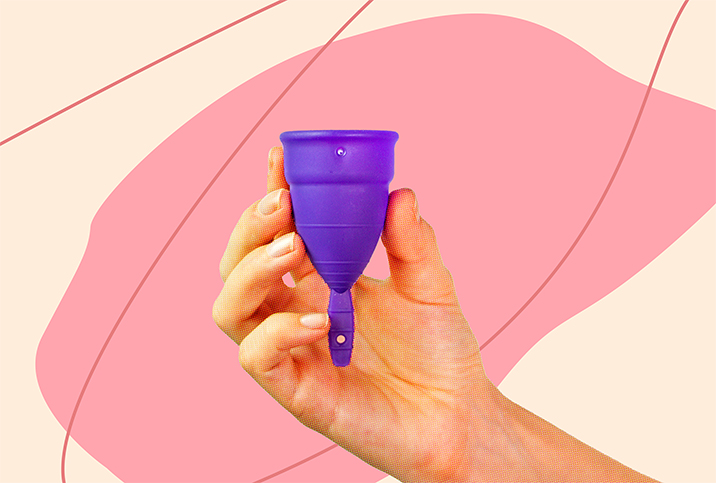Menstrual Complications and Conditions

Understanding the menstrual cycle and how it impacts the body helps women become advocates for themselves and can change the conversation. It seems that no matter how far society advances, the old myths and misconceptions about menstruation dominate how women are treated when it comes to period complications.
Such myths leave many women thinking their symptoms aren’t that bad and they should accept their suffering as part of their existence. But the medical community is beginning to understand that these extreme symptoms experienced by up to 14 percent of women every month can be signs of larger health problems that can result in serious complications like infertility if left untreated.
The menstrual cycle
The menstrual cycle is a biological process typically spanning 28 days, during which the uterus prepares for pregnancy. During the first 14 days, the ovaries work to mature an egg that will be released for fertilization by sperm, and the walls of the uterus thicken in preparation for the implantation of a fertilized egg or zygote.
If the egg is not fertilized, the lining of the uterus will shed at around day 28, resulting in vaginal bleeding for a span of one to seven days. The menstrual cycle is usually monthly, but the frequency of menstruation, its duration and the quantity of blood lost is unique for each woman.
Typically, menstruation begins for the first time during the onset of puberty, between the ages of 11 and 14. The first few years of menstruation are often irregular in occurrence, duration and bleeding patterns. By age 16, menstruation should begin to stabilize and a regular pattern should emerge. But for many young women, their cycles may remain irregular, and oral contraceptives are often used to establish a regular period and to regulate blood flow.
Irregularity is one of the most common menstruation complications because the human body changes often. Monthly changes in hormone levels, the food we consume and the exercise we get can impact monthly menstruation. Understanding the following common disorders can help us identify a problem.
Common disorders
Period irregularity is the most common menstrual cycle issue. While this is most usually experienced during puberty, a woman's hormone levels fluctuate each month in preparation for pregnancy. More dramatic shifts occur at specific times throughout the reproductive years and during menopause.
These hormonal milestones can cause irregular periods at any age and can easily be treated with oral contraceptives or low-dose hormone therapy. Your age and symptoms will dictate the treatment options available to you, so documenting all of your symptoms and sharing these findings with your gynecologist will ensure accurate diagnosis and treatment.
Heavy bleeding
Another common menstrual complication is heavy bleeding, which often coincides with irregularity. The treatment often involves oral contraceptives that regulate menstrual blood flow with low-dose hormones.
Heavy bleeding or menorrhagia is characterized as blood flow that results in soaking through pads in two hours or less, waking up at night to change your pad, passing clots, blood flow that restricts daily routines, anemia and extreme fatigue.
While medical intervention can help patients cope, sometimes heavy bleeding can be associated with other menstrual complications, so a doctor should also check for related problems.
Premenstrual dysphoric disorder
Premenstrual dysphoric disorder (PMDD) is caused by dramatic shifts in hormone levels during the week leading up to menstruation. This condition is commonly confused with premenstrual syndrome because the symptoms are very similar.
During premenstrual syndrome, women can feel fatigued and irritable, experience abdominal bloating, see fluctuations in weight and endure mood swings. These are common symptoms of the natural hormonal changes that occur when the uterus prepares to shed its lining.
Unfortunately, women who experience PMDD also experience dramatic shifts in serotonin levels caused by monthly hormone fluctuations, which can turn these minor symptoms into debilitating problems that force some women to change their entire lifestyle. For decades, this condition was brushed off by the medical community and many women suffered in silence. Now, slowly, the medical community is recognizing this disorder.
Women with PMDD can find relief in treatments that address their symptoms, such as antidepressants that can balance serotonin levels, pain management, dietary and lifestyle changes and some hormone therapies. Self-advocating and working closely with a gynecologist who is receptive to your symptoms is key in receiving the appropriate care for this debilitating disorder.
Endometriosis
Endometriosis is a complication that can intensify menstrual symptoms and impact the uterus' surrounding organs. This condition occurs when the endometrium (the lining of the uterus) grows outside of the uterus. This lining can grow on the external tissue of the uterus, the fallopian tubes, ovaries, bladder, large or small intestine and the colon.
This condition is difficult to treat and diagnose. The most common treatment and diagnostic tool is a laparoscopic surgical intervention that often provides a diagnosis, helps with treatment and creates some temporary relief. But the endometrium will most likely grow back. Only with the complete removal of the endometrium resulting from a total hysterectomy and ovaries excision can lasting relief be achieved.
In addition to painful periods, some secondary side effects include bowel and bladder dysfunction, chronic pelvic pain and bloating. Endometriosis can also cause infertility, as the endometrial lesions and scar tissue can prevent egg release and implantation. For women who are trying to conceive, the surgical removal of lesions and scar tissue can sometimes help increase the chances of conception, but it can also cause scarring on the fallopian tubes that can prevent conception later in life. Make sure to ask your doctor about any and all possible side effects.
Treatments
The treatment for every menstrual complication and condition is unique, but most involve hormonal intervention in the form of oral contraceptives to regulate the menstrual cycle and relieve some of the more debilitating side effects.
In addition to medical intervention, diet, exercise and vitamin supplements can help counteract some of these side effects. A balanced diet and regular, low-impact activity can help reduce pain, bloating and hormonal imbalances in tandem with medical intervention. The products you choose during your menstrual cycle can also impact your monthly menstrual symptoms.
While many feminine hygiene products exist to help maintain cleanliness during your period, it's important to choose hypoallergenic, nonperfumed brands because these choices will be less likely to negatively impact vaginal PH balance. This balance can also be affected by vaginal washes and douches, so it's important to weigh these risks and remember that a healthy vagina does not need chemical cleansing.
Every period product you choose comes with risks. While pads and panty liners have little effect on your cycle, some women avoid commercial period products. Choosing organic, non-bleached products is also an option. And if you are one of the millions of women who use tampons, it's important to always regularly change your tampon. This rule will minimize cramps associated with tampon use and prevent the deadly condition known as toxic shock syndrome (TSS).
When to see a doctor
All bodies are different, so the symptoms and side effects of common menstrual conditions and complications vary. The most important aspect of protecting your health is to monitor the symptoms of your monthly cycle. Many of these conditions display symptoms every day, so keeping a journal and documenting your weight, bodily changes, mood, activity level and appetite can help to create a very detailed picture for your gynecologist.
It may take some determination, but getting into the habit of documenting daily symptoms for multiple months in a row can show very obvious trends in your health. Providing this detailed documentation will allow your gynecologist to weigh the evidence against possible complications and can make for a more definitive diagnosis.
When experiencing menstrual complications, remember that heavy bleeding, irregular periods, chronic pelvic pain, bloating, constipation and mood swings could all be signs of a larger problem beyond simply PMS. When these conditions occur at any time outside of menstruation, these are indications that you need to schedule an appointment with your doctor. In addition to the complications listed here, many of these symptoms can also indicate serious health conditions such as pelvic inflammatory disease, ovarian or cervical cancer or an undiagnosed STD.
Helpful resources
Thankfully, there are a lot of resources out there for people who are worried their menstrual cycle may be abnormal. For questions regarding common menstrual disorders, the Cleveland Clinic's fact sheet gives detailed symptoms of abnormal periods to help women understand what is and isn't normal.
Because symptoms are relative to each individual, Healthy Women offers some guidance on when to seek medical attention from a professional, and details the most common types of menstrual disorders associated with common menstrual symptoms. This article can help women learn how to talk to their doctor, seek treatment and make lifestyle changes to reduce their symptoms.
Remember, just because you've dealt with pain up to this point in your life, it doesn’t mean that you need to continue to live with these symptoms every period. Your better quality of life could be right around the corner.


















